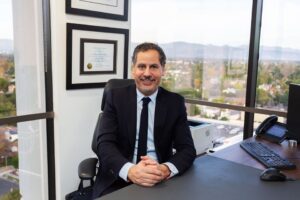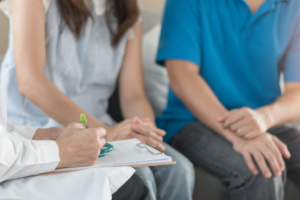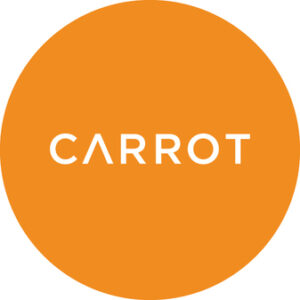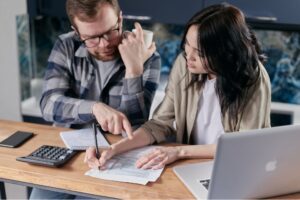Mini IVF Cost: Complete 2026 Pricing Guide
Wondering if mini IVF fits your budget? You’re not alone. Many couples are discovering this gentler, more affordable path to parenthood. And the numbers might surprise you.
Mini IVF typically costs $5,700-$14,000 per cycle nationally (roughly $7,000-$18,000 in Los Angeles), compared to $15,000-$30,000+ for conventional IVF. This lower-cost approach to in vitro fertilization uses fewer medications and monitoring visits while delivering effective results for the right candidates.
But here’s what most people don’t know: your total cost depends on your clinic location, medication needs, and how many cycles you’ll need. Let’s break down exactly what you’ll pay, and how to make it work for your family.
Mini IVF Cost Breakdown: What You’ll Actually Pay
Base Cost of Mini IVF Per Cycle
The straightforward answer is:
- National range: $5,700-$14,000 per cycle.
- Los Angeles/California: $7,000-$18,000 per cycle.
What’s included in your base cost:
- Ovarian stimulation medications (oral + minimal injectable medications).
- Monitoring appointments (3-5 visits vs. 8-10 for conventional IVF cycle).
- Egg retrieval procedure.
- Fertilization and embryo development.
- Fresh embryo transfer.
The big comparison: Conventional IVF in California costs $15,000-$30,000+ per cycle, with fertility medications alone running $4,000-$8,000. Mini IVF achieves dramatic savings through 70-90% fewer medications, meaning fewer injections, lower medication costs, and a gentler minimal stimulation process for your body.

What’s NOT Included in the Base Price
Budget for these common add-ons:
Service Cost Range
Anesthesia $500-$1,500
ICSI (intracytoplasmic sperm injection) $1,000-$2,500
Genetic testing (preimplantation genetic testing) $3,000-$7,000
Embryo freezing $500-$1,000
Annual embryo storage $500-$1,000/year
Frozen embryo transfer $3,000-$5,000
Additional blood tests/monitoring Varies
Important note: A typical mini IVF cycle produces fewer eggs and resulting embryos (1-3 vs. 5-10+), so you may need frozen embryo transfer cycles sooner if your first cycle isn’t successful.
Medication Costs
Your fertility treatment breakdown:
- Oral medications (Clomid/Letrozole): $50-$150.
- Low-dose gonadotropins (Gonal-F, Follistim, Menopur): $500-$2,000.
- Trigger shot (hCG/Lupron): $50-$250.
- Progesterone support: $100-$300.
Total fertility treatment cost: $700-$2,700 vs. $4,000-$8,000 for traditional IVF.
The savings come from using 70-90% fewer medications overall, combining oral medications with minimal injectables instead of high-dose daily injections. This minimal stimulation approach uses lower doses than standard IVF protocols. Costs vary by dosage, pharmacy choice, and insurance coverage (shop around for better prices).
Hidden and Indirect Costs
Beyond the medical expenses, there are indirect costs associated with your fertility journey that can add up quickly. While the mini IVF process requires fewer appointments than one conventional IVF cycle, you’ll still need to budget for:
Time and logistics
- Time off work (fewer appointments than traditional IVF cycle).
- Travel and parking.
- Childcare if needed.
Wellness support
- Counseling/emotional support.
- Supplements and prenatal vitamins.
- Lifestyle modifications.
- Stress management.
Multiple cycle reality
Because mini IVF yields only a few eggs, you may need multiple treatment cycles. Example: 3 mini IVF cycles = $18,000-$42,000 vs. 2 conventional cycles = $30,000-$60,000. Which is more cost-effective depends on your individual situation.

Mini IVF vs. Conventional IVF Cost Comparison
Side-by-Side Cost Comparison
Understanding the differences between mini IVF and conventional IVF helps clarify which approach offers better value for your situation. Here’s a comprehensive comparison:
| Factor | Mini IVF | Conventional IVF |
|---|---|---|
| Cost per cycle (CA) | $7,000-$18,000 | $15,000-$30,000+ |
| Medications | $700-$2,700 | $4,000-$8,000 |
| Injections | 1-2 medications (fewer injections) | 22-30 injections |
| Monitoring visits | 3-5 appointments | 8-10 appointments |
| Eggs retrieved | 1-3 mature eggs | 10-15 multiple mature eggs |
| Timeline | 2 weeks | 4-6 weeks |
Why the massive savings? The mini IVF protocol uses oral medications (Clomid/Letrozole) plus low-dose injectable medications instead of high-dose daily injections for multiple egg development. This minimal stimulation IVF approach means dramatically fewer shots and lower medication costs.
Time = money: The 2-week timeline vs. 4-6 weeks means less time off work and fewer life disruptions. Plus, minimal stimulation produces fewer excess embryos, which aligns with many patients’ values while still achieving successful pregnancy outcomes.
When Mini IVF Is More Cost-Effective
Mini IVF offers the best value for:
Women with diminished ovarian reserve (age 38-40+)
Mini IVF over 40 is the typical ideal scenario:
- High FSH or low AMH levels indicating very low ovarian reserve.
- High medication doses don’t help produce multiple eggs anyway.
- Mini IVF achieves similar results at fraction of cost.
Poor responders to conventional IVF
- Previously produced only a few eggs despite aggressive ovarian stimulation.
- Save thousands with similar egg numbers.
Women with PCOS
- High risk for dangerous ovarian hyperstimulation syndrome (OHSS).
- Mini IVF’s gentle approach reduces ovarian hyperstimulation risk and is more affordable.
Patients doing embryo banking
- Multiple mini IVF cycles to freeze several embryos.
- More affordable than repeated traditional IVF cycles.
The key insight: For women with low ovarian reserve or poor response, egg numbers depend on starting follicle count, not medication dose. Mini IVF patients often see comparable mini IVF success rates at substantially lower cost with fewer health risks than standard IVF.
Success Rates and Multiple Cycle Costs
Success Rates by Age
The critical cost factor: How many cycles will you need to achieve a successful pregnancy?
Age Group Mini IVF Success Conventional IVF Success
Under 35 41% per cycle 50% per cycle
Over 43 22% per cycle 5.5% per cycle
Ages 38-42 Depends on ovarian reserve Depends on ovarian reserve
Surprising finding: For women over 43, mini IVF success rates are 4x higher than conventional IVF. Pregnancy rates per egg retrieved are consistently higher across all ages, suggesting better egg quality with gentle stimulation, even when retrieving fewer eggs.
Planning for Multiple Cycles
Reality check: Fewer eggs per cycle often means:
- 2-3 cycles needed for pregnancy.
- Less likely to have excess embryos for siblings.
- May need full IVF cycles vs. frozen transfers.
Cost scenarios:
- 2-3 mini IVF cycles: $14,000-$42,000.
- 1 conventional cycle: $15,000-$30,000.
- But if conventional IVF also requires multiple attempts, mini IVF remains more affordable.
Which approach is best depends on your age, normal ovarian reserve levels, and family goals. Discuss your options with your fertility specialist to make the best decision for you.
Process and Timeline
Understanding the mini IVF process helps you see how the streamlined timeline contributes to overall cost efficiency:
Typical Mini IVF Cycle Timeline:
- Days 1-5: Begin oral medications (Clomid or Letrozole) for gentle ovarian stimulation.
- Days 6-10: Add low-dose injectable medications if needed.
- Days 11-13: Monitoring appointments (3-5 visits total for ultrasounds and blood tests).
- Day 14: Trigger shot administered, followed by minimally invasive egg retrieval procedure.
- Days 14-19: Laboratory fertilization and embryo development.
- Day 19-21: Embryo transfer of your developing embryo to the uterine lining.
Time savings = cost savings: Less time off work, fewer disruptions, lower indirect costs compared to 4-6 week conventional cycles. Some patients even explore natural cycle IVF or natural IVF approaches, though these may not be suitable for everyone.

Mini IVF Insurance & Financing
Insurance Coverage in California
California has fertility insurance mandates covering many IVF services and ivf treatments, but coverage varies widely:
Common scenarios:
- Some plans cover mini IVF fully.
- Some have lifetime maximums ($10,000-$50,000).
- Some cover diagnostics only, not fertility treatment.
- Most require documented infertility (6-12 months trying).
How to verify coverage:
- Contact insurance directly and ask specifically about mini IVF coverage.
- Ask about lifetime limits for reproductive medicine.
- Confirm mini IVF is covered same as conventional IVF.
- Check if fertility medications covered under pharmacy or medical benefit.
Big savings opportunity: Medication coverage can save $2,000-$5,000 per cycle. Los Angeles employers (especially tech/entertainment) often offer excellent fertility benefits through employer-sponsored plans.
Financing Options
Make it affordable:
- Clinic payment plans: Spread costs over months, sometimes interest-free.
- Healthcare financing: use financing options like Sunfish and Kindbody. We make it easier for you by partnering up with them!
- IVF grants/scholarships: based on financial need or medical history.
- Employer benefits: Check for separate fertility allowances offered by your employer, like Carrot.
- Multi-cycle discounts: Pay upfront for reduced per-cycle rates (10-20% savings).
The nini IVF advantage: Lower per-cycle cost makes financing more accessible with manageable monthly payments, and often makes the difference between starting now vs. waiting years. Some patients may also consider donor egg IVF if needed, though costs differ.
Pro tip: Compare financial programs at multiple clinics. Cheapest isn’t always the best value, but know your options. Look for a mini IVF group or support community that can share experiences.
Making Mini IVF Cost-Effective for Your Family
Here’s the truth: the right fertility treatment isn’t the cheapest. It’s the one that works for YOU.
Mini IVF can be an exceptional value for women over 38, those with diminished ovarian reserve, poor responders, or women with polycystic ovary syndrome. Even 2-3 mini IVF cycles ($14,000-$42,000) often cost less than 1-2 conventional cycles ($30,000-$60,000) with comparable success rates.
But this is about more than money. It’s about:
- Lower medication burden and gentler minimal stimulation cycle.
- Fewer injections and appointments.
- Less time away from life and work.
- A path that respects your body and your budget.
Choose experience over price. Success rates vary dramatically between clinics. Working with a fertility specialist who truly understands minimal stimulation protocols and the unique needs of mini IVF patients makes all the difference.
Ready to explore your options? Schedule a consultation with our fertility specialists at California Center for Reproductive Health. We’ll evaluate your unique situation, discuss realistic success rates, review all costs transparently, and help you choose the path that’s right for your family, whether that’s mini IVF, traditional IVF, or other assisted reproductive technology options.






































